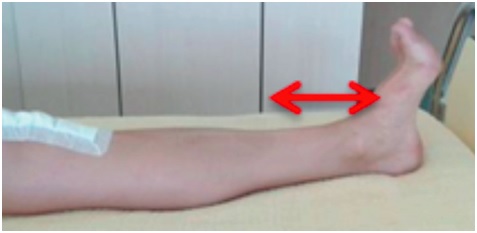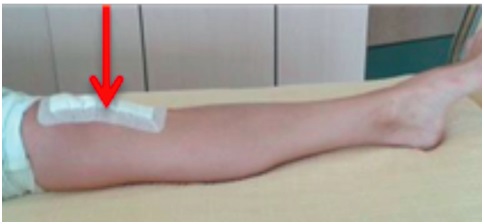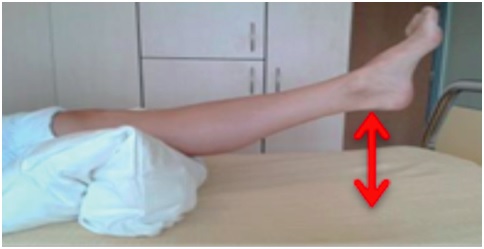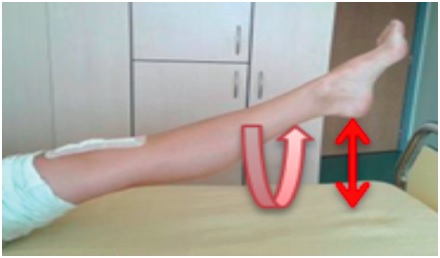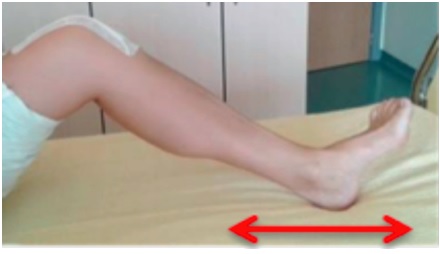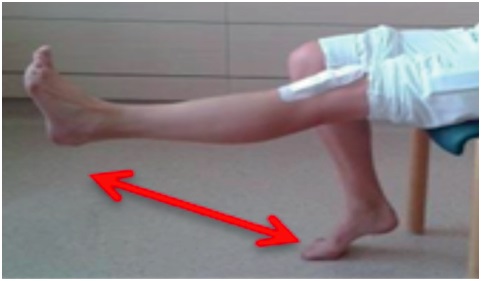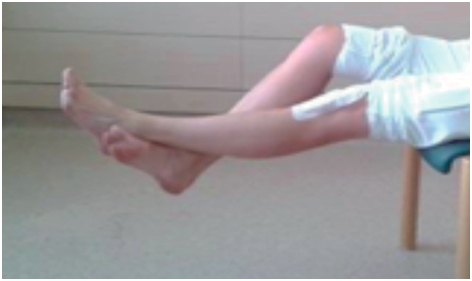Total Knee Arthroplasty
Original Editors
Top Contributors - Safiya Naz, Loes Verspecht, Kim Jackson, Lucinda hampton, Kun Man Li, Jess Bell, Lisa Ingenito, Ellen Wynant, Claire Knott, George Prudden, Karolien Van Melkebeke, Lynn Wright, Tarina van der Stockt, Lauren Lopez, Daniele Barilla, WikiSysop, Karen Wilson, Famke Coosemans, Leana Louw, 127.0.0.1, Evan Thomas, Ewa Jaraczewska and Greg Walding
Search Strategy[edit | edit source]
Medical databases: Pubmed, PEDro, Web of Science
Keywords searched: Total knee arthroplasty, knee osteoarthritis, rehabilitation AND TKA, the knee joint, etiology AND TKA, total knee replacement,...
Books: Total Knee Arthroplasty. A Guide to Get Better Performance. Johan Bellemans, Michael D Ries, Jan MK Victor.
Definition/Description[edit | edit source]
add text here.
Clinically Relevant Anatomy[edit | edit source]
The knee is a hinge joint (articulatio gynglymus). This type of joint permits motion in only one plane. The knee is a special hinge joint; its principal motion is flexion-extension, but rotation is also possible. There are three bones that form the knee joint: the upper part of the tibia , the lower part of the femur and the patella. The bones are covered with a thin layer of cartilage, which ensures that there is no friction between the bones and also acts as a kind of shock absorber. On both the lateral and medial sides of the knee, there is a meniscus, which adheres the tibia to the femur, but is also a shock absorber. The three bones are kept together by ligaments and are surrounded by a capsule.
Epidemiology /Etiology[edit | edit source]
When all the compartments of the knee are damaged, a total knee prosthesis may be necessary. The main cause of need for a total knee prosthesis is osteoarthritis. [1] (evidence level: 1b) Because of the presence of osteoarthritis, the cartilage of the joint becomes damaged and is no longer able to absorb shocks. There are a lot of external risk factors that can cause knee osteoarthritis. For example: overweight, previous knee injuries, the (partial) removal of a meniscus,... [2] (evidence level: 2a) Other causes are rheumatoid arthritis, fractures and congenital factors. There might also be some genetic factors in the development of osteoarthritis, but more research is necessary. (evidence level: 2b)
Total knee arthroplasty is mostly performed on women and increases with age.[2]
Characteristics/Clinical Presentation[edit | edit source]
add text here
Differential Diagnosis[edit | edit source]
Osteoarthritis:
Osteoarthritis is a degenerative process at the level of the cartilage and should be well distinguished from arthritis, which is about a synovial inflammatory process. Osteoarthritis is the main motivation for total knee arthroplasty. [1] (evidence level: 1b)
Other differential diagnosis:
Rheumatoid arthritis, previous injuries to the knee occasioning, for example, the (partial) removal of the meniscus, too much varus or valgus of the knee,...
Diagnostic Procedures[edit | edit source]
add text here related to medical diagnostic procedures
Outcome Measures[edit | edit source]
- Knee disability and Osteoarthritis Outcome score (KOOS) to see if there are any difficulties in the execution of daily activities.
- The Timed Get Up and Go Test (TUG) to see whether the patient is able to walk independently after the surgery or if he needs a walking aid.
- Visual Analogue Scale (VAS) to have an idea about the degree of pain the patient is going through.
(also see Outcome Measures Database)
Examination[edit | edit source]
Pre-operative tests
First the examiner should ask the patient about the history of complaints and also about expectations from surgery. He will then examine the knee (comparing it to the other knee) and the body condition in general.
After this different tests could be carried out to determine whether the patient needs total knee arthroplasty:
- Active research to have a full picture of the patient’s functions.
- Passive research: flexion/extension range of motion, measured by a goniometer. The preoperative ROM is a strong predictor of the postoperative ROM after TKR.
- Muscle function examination.
Post-operative tests[3]
- Inspection: of the wound/scar, redness, adhesion of the skin. When infection of the wound is suspected the patient must be referred to an orthopedist or an emergency doctor.
- Palpation: post-operative swelling, hypertonia (adductors), pain and warmth.
Medical Management
[edit | edit source]
The purpose of the surgical procedure is to achieve pain free movement again, with full functionality of the joint, and to recreate a stable joint with a full range of motion.
Total knee arthroplasty is chosen when the patient has serious complaints and functional limitations. Surgery takes some 60-90 minutes and involves putting into place a three-part prosthesis: a part for the femur, a part for the tibia and a part for the patella (not always) and a polyethylene joint. A high comfort insert design is chosen to achieve this. The perfect prosthesis doesn’t exist; every prosthesis must be different and the most appropriate chosen for each patient.
During surgery a tourniquet is sometimes used; this will ensure that that there is less blood loss. However, when a tourniquet is not used, there will be less swelling and less pain.[4] (evidence level: 1b)
The first day after surgery is a rest day. After the second or third day, the medical team starts to mobilize the knee. After day four active exercise therapy can begin in hospital, and will be continued by the physical therapist in the environment where the patient lives. Therapists will train the muscle power and work to achieve a full range of motion again, especially when full extension needs to be re-developed. We aim for the restoration of full flexion, extension and rotation. [5]
Physical Therapy Management
[edit | edit source]
Before surgery:
The physical therapist can choose to teach the patient the exercises before surgery in order that the patient might understand the procedures and, after surgery, be ready to practice a correct version of the appropriate exercises. In this way recovery can begin very rapidly. It is also important that the functional status of the patient before surgery be as good as possible. This will help recovery after surgery. Furthermore the patient can also start a training program before surgery. The patient has to train his postural control, needs to perform functional exercises and develop the strength of the lower extremities.[6] (evidence level: 1b)
After surgery:
In several studies the effect of physiotherapy after total knee arthroplasty was examined. Generally these studies have shown that physiotherapy is always beneficial. The reports are not always clear regarding the kind of physiotherapy practiced, but all stress the importance of the patient moving. For example aquatherapy, balance training or cycling were added to the basic therapy, but there was no difference between the results obtained by the various therapies. One study compared a group of patients who didn't receive physiotherapy and a group who did. In this study it was clear that physiotherapy actually has its benefits. (evidence level: 1a)
There are four steps in the revalidation process. The first step is mobilizations, then static strength, followed by dynamic strength, and ending with stabilization. The mobilizations and static strength training can be started at almost the same time. The first day after surgery it is important to stimulate blood circulation. Therefore the patient can be asked to perform a flexion and extension with the feed.
Already from day 2, one can start to walk with the patient with an ambulator or walker. The therapist also starts mobilization exercises regarding flexion and extension; usually these exercises are performed on a shuttle bench. The flexion and extension of the knee can also be immediately practiced actively . [7]
The following exercises are examples:
Excersises with the patient lying down
• Pull the feet to you and release. Turn with the feet. This exercise is important to improve the blood circulation.
• Press the knee down and pull the patella up. This exercise is called the quadriceps setting
• Put a pillow under the knee and straighten the leg
• Lift the straightened leg up and: - make circles
- move inside and outside horizontally.
This exercise is important to recuperate full extension in the knee.
• Glide the heel over the floor, pull the knee up and straighten it back. This exercises the flexion and extension of the knee. This exercise can also be performed later on while the patient is sitting on a chair.
Excersises while the patient is sitting down:
• Pull the toes up, so that only the heel stays on the floor
• Straighten the leg; using the other leg to help. This exercise is important to recuperate extension in the knee.
• Pull the leg up and move it in- and outside.
• Glide the heel over the floor, pull the knee up and straighten them back.
Excersises in standing
• Stand alternating on the heels and toes; a chair can be used to help balance. Stand on one leg and try to put your weight on it.
• Curve gently through your knees. 14 (evidence level: 1b)[8]
- ↑ 1.0 1.1 Skou, Søren T., et al. "A randomized, controlled trial of total knee replacement." New England Journal of Medicine 373.17 (2015): 1597-1606.
- ↑ 2.0 2.1 Blagojevic, M., et al. "Risk factors for onset of osteoarthritis of the knee in older adults: a systematic review and meta-analysis." Osteoarthritis and cartilage 18.1 (2010): 24-33.
- ↑ Jakobsen, Thomas Linding, et al. "Early Progressive Strength Training to Enhance Recovery After Fast‐Track Total Knee Arthroplasty: A Randomized Controlled Trial." Arthritis care & research 66.12 (2014): 1856-1866.
- ↑ Fan Y, Jin J, Sun Z, Li W, Lin J, Weng X, Qiu G. The limited use of a tourniquet during total knee arthroplasty: a randomized controlled trial. Knee. 2014; 21(6): 1263-1268
- ↑ Total Knee Arthroplasty . A Guide to Get Better Performance, Johan Bellemans Michael D Ries Jan MK Victor , Berlin, Heidelberg : Springer Medizin Verlag Heidelberg, 2005
- ↑ Huber EO, de Bie RA, Roos EM, Bischoff-Ferrari HA. Effect of pre-operative neuromuscular training on functional outcome after total kneereplacement: a randomized-controlled trial. BMC Musculoskelet Disord. 2013 May
- ↑ Artz N,Elvers KT, Lowe CM, Sackley C, Jepson P, Beswick AD.Effectiveness of physiotherapy exercise following total knee replacement: systematic review and meta-analysis.BMC MusculoskeletDisord. 2015;16: 15-...
- ↑ Total Knee Arthroplasty . A Guide to Get Better Performance, Johan Bellemans Michael D Ries Jan MK Victor , Berlin, Heidelberg : Springer Medizin Verlag Heidelberg, 2005
Key Research[edit | edit source]
add links and reviews of high quality evidence here (case studies should be added on new pages using the case study template)
Resources
[edit | edit source]
add appropriate resources here
Clinical Bottom Line[edit | edit source]
add text here
Recent Related Research (from Pubmed)[edit | edit source]
see tutorial on Adding PubMed Feed
Extension:RSS -- Error: Not a valid URL: Feed goes here!!|charset=UTF-8|short|max=10
References[edit | edit source]
see adding references tutorial.
